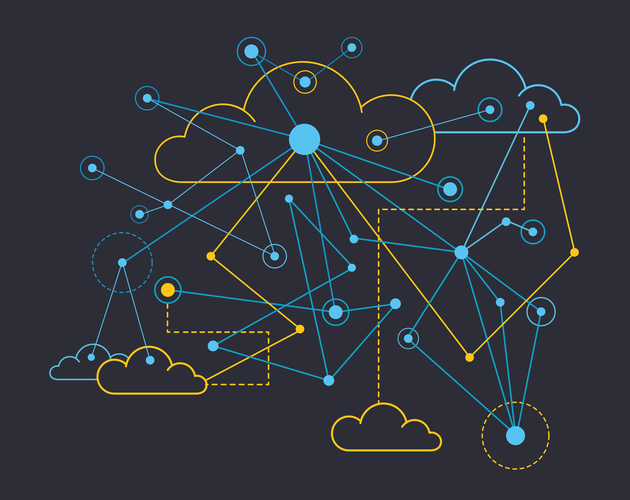What exactly is Web3 and is it the future of the internet? World Economic Forum
However, Web 3.0‑based payment applications are based on the crypto concept, which makes borderless transactions extremely simple and safe without giving up sensitive data or personal details. A common example is Solana, a network that allows transactions in fractions of milliseconds at a very minor cost without making the user share their personal information. The semantic web enhances online technologies by allowing users to create, share, and connect content via search and analysis based on the ability to understand the meaning of words rather than keywords or numbers. OpenZeppelin provides an assortment of tools to help developers build, automate and run dApps. OpenZeppelin Contracts is a modular smart contract library that supports industry best practices, while OpenZeppelin Defender provides a secure operations platform for smart contracts. Alchemy is a Web 3.0 development platform for connecting dApps to blockchains.
What Is Web 3.0? – Forbes Advisor UK — Forbes
What Is Web 3.0? – Forbes Advisor UK.
Posted: Tue, 17 Oct 2023 07:00:00 GMT [source]
It also includes various primitives to help create NFTs and deploy dApps that use decentralized blockchain storage platforms like IPFS. Network management and operations tools help scale blockchain infrastructure for large deployments. Chainlink helps developers implement decentralized blockchain oracles on the Ethereum platform. This capability helps facilitate data exchange with smart contracts that run on the Ethereum blockchain. Key features include support for reliable tamper-proof networks, connection via common APIs and pre-built oracles for various use cases.
Research Manager Deloitte Services LP
Web3 may be in its infancy, but understanding how it works can help determine if it’s a field you want to explore. IPFS is a decentralized and distributed file storage system that provides a more efficient and resilient way to store and access content on Web 3.0. It gives a unique cryptographic hash (content-based address) to every file. It uses a peer-to-peer network, where each IPFS node acts as a client and server. Nodes cooperate to store, retrieve, and distribute content across the web, eliminating the need for centralized servers.
The metaverse will consist of multiple virtual worlds connected through networks and servers. And Web 3.0 will help ensure a more immersive experience there, helping users easily interact with each other. Hence, Web 3.0 will empower the growth web 3.0 development solutions of smart applications leveraging AI and ML technologies. Examples of such applications would be multi-user virtual environments and integrated games. Now, the major goal that Web 3.0 pursues is to give control of the data back to users.
Who created Web 3.0?
This limits data extraction practices and helps curb the network effects that have allowed tech giants to become near-monopoly through exploitative advertising and marketing practices. Mike Bechtel is a managing director and the chief futurist with Deloitte Consulting LLP. Mike helps clients develop strategies to thrive in the face of discontinuity and disruption. His team researches the novel and exponential technologies most likely to impact the future of business, and builds relationships with the startups, incumbents, and academic institutions creating them.

Decentralization is the essence of Web 3.0, and it has extensive potential when it comes to the web and beyond. Thus, having developers who understand innovation and have a knack for enabling decentralization is the key to creating a high-quality ecosystem. Therefore, we could say that, at present, we have only scratched the surface of its potential. Indeed, any business transformation in the near future is extremely likely to depend on the internet for its evolution.
Content presentation principle
The ledger then automatically updates by using a transaction in the next block to reflect you as the new owner. Web Ontology Language (OWL) is a language for defining ontologies, or formal representations of knowledge and relationships between concepts. You can use it to specify classes, properties, and instances, as well as facilitate reasoning and inferencing. Web 3.0 coins will be the same coins as Web 3.0’s underlying cryptocurrencies, such as Bitcoin and Dogecoin, which are already in use. Nonetheless, predictions about Web 3.0’s arrival are notoriously unreliable. Given that its core technologies are still emerging and just becoming practical, Web 3.0 is probably at least a decade off — a view largely confirmed by industry analysts.
- The focus was on building the next internet — more intelligent, open, and autonomous than its predecessor.
- With the Resource Description Framework (RDF), you can express statements as triples in the form of subject-predicate-object.
- There are different token types in the virtual world, such as security tokens subject to securities regulations or non-fungible tokens (NFTs) representing unique, indivisible assets that don’t allow fractal ownership.
- They share a vision of the internet as an extension of the real world, but they are not interchangeable terms.
- The vision for this new, blockchain-based web includes cryptocurrencies, NFTs, DAOs, decentralized finance, and more.
It allows developers to run Solidity locally and test and debug Solidity code on their laptops before deploying into live dApps. Hardhat also supports features for performing stack traces and generating explicit error messages when problems arise. In theory, this also means avoiding fees, rules and the strictures of tech companies. Scalability remains a primary concern, as blockchain networks can get very expensive and computationally demanding as data volumes increase. Efforts are ongoing to create sustainable and environmentally friendly technologies.
Decentralized identification
But decentralized Web 3.0 is not only about security but also about more effective interaction due to artificial intelligence. Core features of Web 3.0, such as decentralization and permissionless systems, will also give users much greater control over their personal data. In Web 2.0, computers use HTTP in the form of unique web addresses to find information stored in a fixed location, usually a single server.

Users of OneDrive 3.0’s web interface also will see a cosmetic refresh with the Fluent interface design in December, which Microsoft is rolling out to many Windows 11 Office applications. Fluent is an open source software framework that aims to standardize design, internationalization and accessibility. A Microsoft spokesperson said any app already supported on Windows or Mac will work with the “open in native apps” feature. Using the prompt, users will be able to open any files with the default app — when it has been already specified for files of that type — or an app picker will pop up for users to choose the native app. The current state of Web 3.0 underscores the urgency for a shift in mindset – from competition to collaboration.
The Ultimate Guide to Web 3.0 — Everything you need to know about Web 3.0 before learning it
Allan was also the Global TMT Sector leader for Ops Transformation & has more than 30-years of industry experience. He works with a wide variety of organizations on strategy, scenario planning, business transformation, innovation & digital reality. Truly transformative technologies enable new use cases, and without question we’ll be telling different stories about the Spatial Web five years from now. But by participating with this vision in mind from the beginning, your company may be better positioned to tell that story instead of having it told to you.

These will allow site members to earn points, convert them into tokens, and own a portion of the community. Imagine a digital economy where its members contribute to the economy and earn ownership of the platform. Imagine an app like Wayz where a community shares its data and gets rewarded through digital assets such as a token. Decentralized Networks based on blockchain technology are growing tremendously.
Further Reading
Web 2.0 heavyweights, including Google, Meta and Microsoft, recently added blockchain features to some of their products and labeled them “Web 3.0,” perhaps to capitalize on the Web 3.0 hype. The metaverse and Web 3.0 are interdependent at the technical and conceptual levels and, therefore, likely to evolve in tandem. The metaverse probably won’t come to pass until its Web 3.0 underpinnings are firmly established. Whether Web 3.0 comes to pass, especially in the form currently envisioned, remains an open question.

